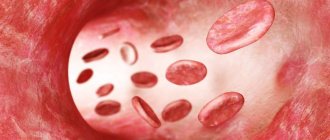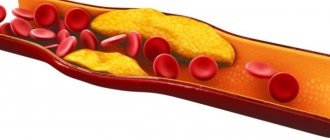A condition in which the rhythm, frequency and depth of breathing is disrupted, and a feeling of air deficiency occurs, is called shortness of breath. The causes and treatment of this disorder can be very diverse. Shortness of breath can occur under various conditions. So, for example, there is shortness of breath when talking, shortness of breath when lying down, after sleep, shortness of breath at rest, etc. The breathing of a person with shortness of breath is frequent and noisy; it is these manifestations that give others reason to assume the presence of shortness of breath. Shortness of breath can be a consequence of quite serious diseases, therefore, when it appears, it is necessary to contact a specialist as quickly as possible, who will competently explain what shortness of breath is and how it manifests itself, and also prescribe a comprehensive diagnostic examination to identify the causes of its occurrence.
The Therapy Center of the Yusupov Hospital offers high-quality diagnostics and effective treatment of diseases accompanied by shortness of breath. If necessary, a pulmonologist can be called to your home.
Types of shortness of breath
Shortness of breath can be of several types:
- inspiratory (shortness of breath while inhaling), expiratory (during exhalation) and mixed (with difficulty in inhaling and exhaling);
- tachypnea (increased shallow breathing) and bradypnea (decreased breathing);
- physiological - transient, reversible intensification of breathing (shortness of breath during physical exertion). The causes of shortness of breath in this case are that it is an adequate adaptive response to stress, injury, or an objectively low level of oxygen in the inhaled air;
- pathological (in case of airway obstructions due to bad habits, cardiovascular failure, obesity, lung diseases, hematopoietic system, etc.).
Causes of development of chronic heart failure
Chronic heart failure can develop in patients suffering from coronary heart disease, arterial hypertension, and heart defects. In coronary heart disease, a common cause of left ventricular systolic dysfunction and chronic heart failure is acute myocardial infarction and ischemic cardiomyopathy. The progression of chronic heart failure is caused by changes in the geometry and local contractility of the heart muscle.
In patients suffering from hypertension, regardless of the cause of arterial hypertension, a structural restructuring of the myocardium occurs, which is called a “hypertensive heart”. Chronic heart failure develops as a result of acquired and uncorrected rheumatic defects. Other causes of chronic heart failure include infective endocarditis, toxic cardiomyopathy due to exposure to drugs, alcohol, radiation therapy, systemic vasculitis, metabolic and endocrine disorders.
Why does shortness of breath occur?
If a person suddenly develops severe shortness of breath, the reasons can be very diverse. Most often it is caused by the following conditions:
- cardiovascular diseases – due to these pathologies, blood circulation is impaired. Internal organs suffer from a lack of oxygen, and carbon dioxide accumulates in the blood. The body’s reaction to this condition is increased breathing: a larger volume of air is pumped through the lungs per unit of time. In the supine position and after physical activity, shortness of breath associated with heart pathology occurs or intensifies. Severe shortness of breath occurs with the patient sitting or half-sitting. This kind of shortness of breath is characterized by difficulty breathing;
- diseases of the respiratory system - the appearance of shortness of breath is associated with obstacles to the passage of air through the respiratory tract (for example, narrowing of the lumen of the bronchi). Therefore, shortness of breath is considered a typical symptom of bronchial asthma. With this disease, the patient experiences difficulty in exhaling. In addition, shortness of breath occurs in cases where the respiratory surface of the lung tissue is reduced. Such a decrease is accompanied by an increase in the intensity of lung function, i.e. frequent inhalation, which is necessary to maintain the required amount of oxygen entering the blood. The list of pathologies of the respiratory system accompanied by shortness of breath includes neoplasms, pneumonia, chronic obstructive pulmonary disease, etc.;
- anemia - even with normal activity of the lungs and heart, a deficiency of hemoglobin and red blood cells leads to insufficient provision of the organs with the necessary amount of oxygen. To compensate for this disorder, the body increases its breathing rate;
- neuroses and panic attacks - in these cases, clinical examinations do not reveal the presence of cardiovascular and pulmonary pathologies, but subjectively the patient suffers from lack of air, and the appearance of psycho-emotional changes provokes increased breathing, which causes shortness of breath;
- various tumors – shortness of breath occurs with a tumor of the thalamus, intestinal tumors, etc.;
- problems with the gastrointestinal tract. For example, hoarseness, cough, shortness of breath with esophagitis are characteristic symptoms;
- obesity and diabetes are common causes of shortness of breath.
What are the characteristics of breathing complications after suffering from covid-19?
Symptoms of shortness of breath with coronavirus:
- feeling of tightness in the chest,
- rapid breathing,
- superficial breathing movements,
- It's difficult to take a deep breath.
coronavirus shortness of breath symptoms
The presence of shortness of breath in healthy people does not always indicate pathology. It can normally occur in athletes and runners. It can also occur in ordinary people during physical activity. But after suffering from covid-19, shortness of breath occurs even at rest, the body is starved of oxygen, which disrupts its vital functions.
Shortness of breath in people of different age categories
Shortness of breath can occur in people of all ages, from infants to the elderly.
In children, shortness of breath can be both physiological and pathological. The appearance of physiological shortness of breath is caused by physical exertion or high anxiety, which is considered normal. When the respiratory system is immature, pathological shortness of breath occurs in the infant. How to determine the type of shortness of breath and its causes is decided by the pediatrician, selecting the necessary diagnostic methods.
In old age, people's tolerance to physical activity decreases and the efficiency of the respiratory system decreases. Due to age-related changes, the physical strength of the respiratory muscles decreases, as a result of which gas exchange worsens and normal breathing becomes difficult. In addition, older people tend to have diseases of the cardiovascular system and lungs, which lead to shortness of breath. Most often, they do not pay attention to this symptom for a long time, so the diseases that accompany it are diagnosed at advanced stages. As a result, treatment becomes more difficult, the quality of life and its duration are significantly reduced. So it is better to immediately seek medical help if shortness of breath occurs in older people, without waiting for the condition to worsen.
The best pulmonologists in Moscow - Doctor of Medical Sciences, Professor Alexander Vyacheslavovich Averyanov, Candidate of Medical Sciences Alexander Evgenievich Shuganov are receiving appointments at the therapy center of the Yusupov Hospital. Klina is equipped with innovative high-tech equipment for conducting the most modern diagnostic studies. Thanks to an integrated approach involving specialized specialists in various fields, our doctors identify the exact cause of shortness of breath and select an effective treatment regimen, taking into account the individual characteristics of each patient.
Relief from anxiety
Shortness of breath can cause feelings of fear. Some people say they feel anxious when they start to feel short of breath. However, anxiety can make breathing even more difficult.
Breathing exercises from this material can help you relax. You may also want to know other ways to help relieve anxiety. Talk to your doctor about any anxiety you have. He may prescribe anti-anxiety medications such as alprazolam (Xanax®) or lorazepam (Ativan®) to help you.
Our Integrative Medicine Service also offers relaxation programs that may be beneficial for you.
to come back to the beginning
What is shortness of breath in humans: symptoms
The occurrence of shortness of breath in the initial stages of damage to the cardiovascular and respiratory systems is associated with physical exertion (for example, when the patient climbs up the stairs). As the pathology progresses, shortness of breath and fatigue appear even with a slight load (walking on a flat surface, tying shoelaces, etc.), as well as at rest.
Patients perceive shortness of breath quite subjectively. It may be accompanied by the following symptoms:
- difficulty breathing (inhalation/exhalation);
- compression in the chest;
- feeling of congestion in the chest area;
- tightness in the chest;
- feeling of lack of air;
- inability to take a deep breath or exhale completely;
- suffocation.
What to do if you have severe shortness of breath?
Noninvasive ventilation (NIV) provides relief for increased breathing needs. This procedure is less useful for patients with defects in oxygen diffusion in the alveolar arteries. The most effective component of pulmonary rehabilitation is special breathing exercises.
Recommendations to follow in case of severe shortness of breath:
- If you have serious breathing problems, it is better to sleep with the head of the bed raised. This will help the lungs expand and promote drainage of secretions.
- While sitting, lean forward on your elbows. This will also help your lungs expand and make breathing easier.
- To reduce anxiety, you can use relaxation techniques (take slow, even, deep breaths and try to focus on pleasant things).
- Take medications strictly as prescribed by your doctor.
- If you experience side effects from your medications, especially if they are severe, tell your doctor or emergency team members.
- Use pursed-lip breathing when you feel short of breath. Inhale through your nose and exhale very slowly through your mouth, pursing your lips slightly. The exhalation should last twice as long as the inhalation.
- If you experience sudden breathing problems, you should open a window, move to another room where there are fewer people, or go outside.
- Nicotine and other chemicals in cigarettes can make shortness of breath worse. Electronic cigarettes also contain nicotine.
- Cold air and using fans to blow air onto the face can significantly improve shortness of breath. Supplemental oxygen has only been shown to be beneficial in hypoxic patients.
Simple but effective recommendations help improve your shortness of breath. Additional measures are aimed at reducing anxiety and providing an increased sense of control.
There are a huge number of reasons for shortness of breath. It is impossible to determine on your own whether it is a symptom of a serious illness. Only a highly qualified specialist can determine which organ disease caused the pathology and prescribe the appropriate examination. Make an appointment with your doctor to determine the cause of your discomfort.
sign up for a consultation
Shortness of breath: diagnosis
Diagnosis of the underlying pathology that provoked shortness of breath is carried out using the following research methods:
- general examination (general medical examination, counting the frequency of respiratory movements of the chest, listening to the lungs with a phonendoscope);
- general blood test;
- chest radiography;
- computed tomography of the chest;
- spirometry (spirography) – to assess air flow through the respiratory tract and the ability of the lungs to expand;
- tests using a bronchodilator - spirometry is performed before and after inhalation with a bronchodilator drug. This study allows us to evaluate the reversibility of bronchial narrowing;
- bronchoprovocation test - spirometry is performed before and after inhalation of histamine and methacholine. It is carried out to detect increased sensitivity of the bronchi, which causes bronchospasms;
- studies of the gas composition of the blood (the level of tension in the blood of carbon dioxide, oxygen is determined, the saturation of the blood with oxygen is assessed);
- body plethysmography – allows you to evaluate the function of external respiration. It is used to assess all volumes and capacities of the lungs, incl. those that spirography cannot determine;
- electrocardiography (ECG), echocardiography (ultrasound of the heart, echocardiography) - allows you to assess the functional state of the heart and pressure in the pulmonary artery system;
- fiberoptic bronchoscopy is a study that is used to examine the mucous membrane of the bronchi from the inside and study its cellular composition with a special preparation. The use of this method is advisable for patients with an unclear diagnosis. Allows you to exclude other possible diseases with similar symptoms;
- angiopulmonography – during the procedure the blood vessels of the lungs are examined;
- lung biopsy;
- consultations with a pulmonologist, cardiologist.
When to see a doctor?
In some cases, if shortness of breath and weakness occur, emergency medical attention is needed. An ambulance should be called in the following cases 2.7:
- severe sudden shortness of breath, accompanied by severe weakness, sweating;
- the appearance of sharp chest pain, palpitations, fainting, nausea;
- convulsions;
- impairment or complete loss of vision;
- speech disorder.
In other cases, a routine consultation with a general practitioner or family doctor is necessary to find out the cause of the ailment, conduct a diagnosis and begin correct treatment. To establish a diagnosis, the doctor may prescribe a number of examinations:
- laboratory tests - blood and urine tests;
- instrumental studies - ultrasound, sometimes MRI, CT.
If necessary, the doctor prescribes consultations with specialized specialists - a cardiologist, pulmonologist, hematologist, geneticist and others. Once the diagnosis is made, treatment is prescribed.
References
- Mukhambetova G. A. et al. Diagnostic criteria for Pompe disease // Bulletin of the Almaty State Institute for Advanced Medical Studies, 2013. No. 3.
- Shortness of breath. Mayo clinic. URL: https://www.mayoclinic.org/symptoms/shortness-of-breath/basics/causes/sym-20050890 (accessed 10/18/2019).
- Chikina S. Yu. Principles of assessing shortness of breath in the practice of a pulmonologist // Practical Pulmonology, 2006. No. 2.
- Avdeev S. N. Thromboembolism of the pulmonary arteries // Practical Pulmonology, 2009. No. 3.
- Carbon monoxide poisoning. MSD Handbook. URL: https://www.msdmanuals.com/ru/%D0%BF%D1%80%D0%BE%D1%84%D0%B5%D1%81%D1%81%D0%B8%D0%BE %D0%BD%D0%B0%D0%BB%D1%8C%D0%BD%D1%8B%D0%B9/%D1%82%D1%80%D0%B0%D0%B2%D0%BC% D1%8B-%D0%BE%D1%82%D1%80%D0%B0%D0%B2%D0%BB%D0%B5%D0%BD%D0%B8%D1%8F/%D0%BE% D1%82%D1%80%D0%B0%D0%B2%D0%BB%D0%B5%D0%BD%D0%B8%D1%8F/%D0%BE%D1%82%D1%80%D0 %B0%D0%B2%D0%BB%D0%B5%D0%BD%D0%B8%D0%B5-%D1%83%D0%B3%D0%B0%D1%80%D0%BD%D1% 8B%D0%BC-%D0%B3%D0%B0%D0%B7%D0%BE%D0%BC (accessed 10/24/2019).
- Federal clinical guidelines for the diagnosis and treatment of iron deficiency anemia, 2015.
- Stroke. Mayo clinic. URL: https://www.mayoclinic.org/diseases-conditions/stroke/symptoms-causes/syc-20350113 (accessed 10/24/2019).
GZEA.PD.18.09.0435t
Shortness of breath: treatment
Pulmonologists at the Yusupov Hospital Therapy Center select an individual drug therapy regimen for each patient, depending on the disease that provoked the onset of shortness of breath.
The clinic’s rehabilitators draw up a plan for physical training and pulmonary rehabilitation to increase the patient’s tolerance to physical activity, and prescribe breathing exercises using various methods (diaphragmatic breathing, inflating balloons, blowing air through a tube, etc.) that train the respiratory muscles.
In severe cases, artificial ventilation is used.
Shortness of breath accompanies pathologies of various organs and systems of the human body. Therefore, each individual case requires specific therapy, aimed primarily at eliminating the underlying disease causing shortness of breath.
How to treat shortness of breath caused by cardiovascular diseases?
Patients with shortness of breath associated with cardiovascular diseases are prescribed therapy, the goals of which are:
- improve oxygen supply to the heart;
- increase cardiac output;
- reduce blood stagnation in the lungs.
The use of nitrates, glycosides, and diuretics is effective. Patients with heart failure are recommended to always have nitroglycerin available, which helps to immediately dilate the blood vessels of the heart muscle.
Oxygen therapy is used to replenish the lack of oxygen in the blood.
How to get rid of shortness of breath: first aid
Providing first aid for shortness of breath to a person suffering from heart disease involves doing the following:
- call an ambulance;
- before the arrival of doctors, it is necessary to ensure the flow of fresh air into the room where the patient is located by opening the window;
- the patient must be seated on a chair;
- remove the tie and scarf from the patient’s neck, unbutton the top buttons on the shirt;
- Place a nitrosorbide tablet under the patient’s tongue and give any diuretic.
How to cure shortness of breath associated with pulmonary diseases?
For shortness of breath caused by pulmonary pathologies, patients are advised to drink plenty of alkaline fluids (except for patients with pulmonary edema).
To relieve bronchospasm, selective β2-adrenergic agonists (salbutamol, fenoterol, terbutaline, formoterol, clenbuterol, salmeterol) are prescribed. M-cholinergic receptor blockers are effective for relaxing the muscles of the bronchi.
Patients suffering from bronchial asthma are prescribed inhalations with NSAIDs and steroid therapy.
Treatment of shortness of breath due to bronchitis involves the use of medications to separate sputum. These include:
- acetylcysteine;
- carbocysteine;
- bromhexine;
- ambroxol.
How to get rid of shortness of breath associated with allergies?
Every person suffering from allergic diseases should know what to take for shortness of breath of this etiology:
- diazolin;
- diphenhydramine;
- suprastin;
- tavegil;
- fenistil;
- claritin;
- desloratodine, etc.
As an additional therapy for shortness of breath caused by allergies, you can use traditional medicine: decoctions of plants that have an expectorant effect (from plantain, pine buds, coltsfoot), as well as hot foot baths.
How to deal with shortness of breath of a psychogenic nature?
Shortness of breath quite often accompanies mental disorders - melancholy, panic attack, depression. Patients suffering from these conditions are prescribed sedatives, antidepressants and tranquilizers. The use of therapeutic hypnosis is also effective. Treatment is prescribed exclusively by a psychotherapist.
Shortness of breath, especially at rest, is an alarming symptom that often manifests quite serious pathologies that require immediate examination and urgent medical care. Therefore, if such a respiratory disorder occurs, it is necessary to urgently visit your doctor. You can make an appointment with a therapist or pulmonologist at the Yusupov Hospital by calling the phone number listed on the clinic’s website.
How to help an elderly person with shortness of breath in an emergency
Diseases associated with heart failure are life-threatening and it is necessary to be able to distinguish such conditions in order to provide timely help to the person.
Symptoms indicating that the lack of oxygen is associated with a problem with the heart:
- an elderly person has difficulty taking a breath;
- with any type of exertion, shortness of breath increases;
- shortness of breath appears in a lying position; in a sitting position, normal breathing is restored.
A person's lips turn blue, weakness and panic occur. Such symptoms are dangerous (pulmonary edema may occur) and require an immediate call to the ambulance.
Prognosis and prevention
Dyspnea does not fall into the category of systemic diseases. This is a sign of the development of cardiac or pulmonary pathology. The problem can only be dealt with by treating the underlying disease. With dystrophic changes as a result of the development of cardiac pathologies, survival rate decreases to 60%. Only early diagnosis and timely treatment can guarantee a favorable outcome.
To relieve the symptoms of shortness of breath or for prevention purposes, it is recommended to adhere to the following rules:
- Perform simple exercises to train the respiratory system and increase muscle tone, unless there are contraindications.
- Avoid contact with allergens that may worsen the condition.
- Prevent seasonal infections.
- Stop smoking.
- Control body weight.
The main condition for preventive measures is strict compliance with all recommendations of the attending physician.
Shortness of breath may make it difficult to eat. Here are some practical tips for saving energy and getting the most out of your food:
- eat in small portions;
- try to breathe calmly and evenly while eating;
- Frozen convenience foods, ready-made meals, or take-out and delivery can make life easier;
- it is recommended to limit the amount of products that cause gas formation;
- You can keep a food diary to determine which foods worsen your overall condition.
In some cases, acupressure and/or acupuncture can help. Before deciding to prescribe procedures, you should definitely consult your doctor. Both practices focus on stimulating hot spots to optimize energy flow and release blockages.
Dyspnea at rest is a rare phenomenon that accompanies severe and advanced diseases. This phenomenon usually appears during physical activity. Pay attention to whether you have difficulty breathing when climbing stairs or walking quickly. If you notice a lack of oxygen, be sure to make an appointment with your doctor for consultation.











